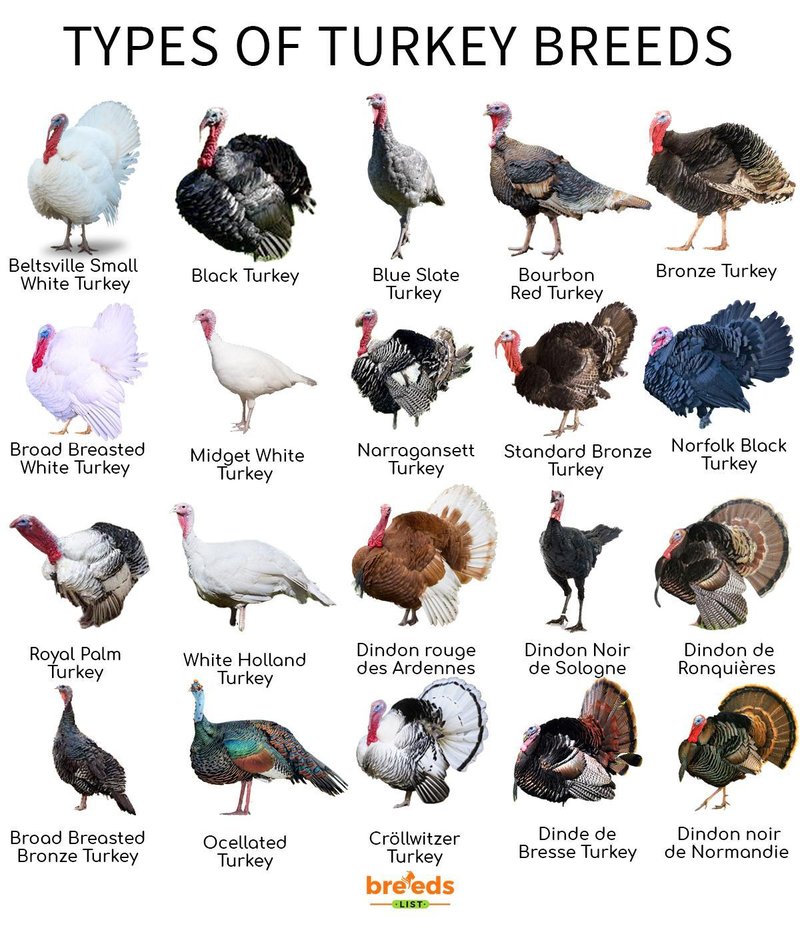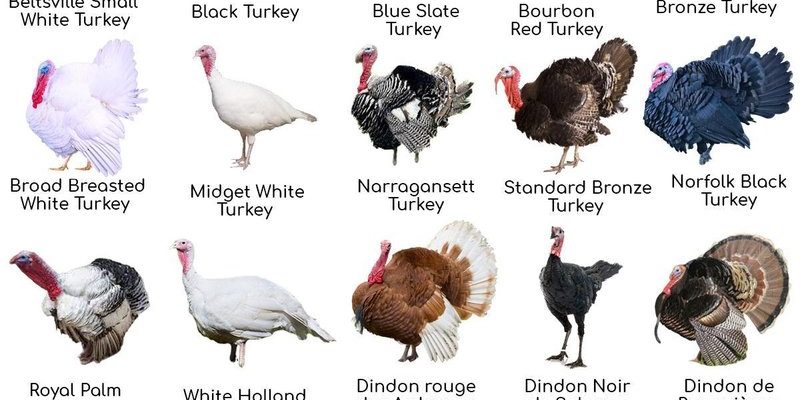
In this article, we’ll dive into the world of turkey breeds, exploring the most popular varieties for both farming and companionship. Whether you’re a seasoned farmer or just someone curious about these feathered friends, we’ll break down everything you need to know. Grab a cup of coffee and let’s chat about these fascinating birds that deserve a spot in your life, be it in your backyard or on your farm.
Why Choose a Turkey as a Pet or for Farming?
You might be wondering what makes turkeys such a great choice for pets or farming. Well, turkeys are remarkably social creatures. They love to interact with people and can become quite attached to their owners. If you’re looking for a pet that offers a bit more personality than a dog or cat, a turkey can be a delightful choice.
On the farming side, turkeys are incredibly versatile. They can provide you with delicious meat, eggs (though not as commonly as chickens), and, importantly, they can assist with pest control in your garden. Turkeys love to forage, which means they’ll help keep your yard free from bugs while enjoying their time outside.
In a nutshell, whether you’re after a quirky pet or a useful farm animal, turkeys have plenty to offer.
Broad Breasted White Turkey
The Broad Breasted White Turkey is one of the most popular commercial breeds. You know those big, plump birds that grace the holiday table? That’s this breed. They are specifically bred for their meat and grow quite rapidly, often reaching market weight in just a few months.
One of the key traits of the Broad Breasted White is its size. These birds can weigh anywhere from 20 to 30 pounds or more, making them a staple for Thanksgiving dinners. However, their size comes at a cost. They don’t reproduce naturally, so most are raised in commercial settings. If you’re looking to raise turkeys for farm use, this breed is a sure bet for meat production.
However, keep in mind that their heavy frame means they can be a bit clumsy. Broad Breasted Whites can also have health issues if not managed well, so if you plan to raise them, ensure they have enough space to roam and access to adequate food and water.
Pros and Cons of Broad Breasted White Turkeys
- Pros: Fast growth, high meat yield, widely available.
- Cons: Limited breeding capability, potential health issues due to size.
Narragansett Turkey
If you’re looking for a turkey that’s not just tasty but also visually stunning, the Narragansett Turkey might be your go-to. This breed boasts a beautiful blend of gray and bronze plumage, which makes it quite a sight in your yard. Narragansetts are known for being gentle and friendly, making them a fantastic choice for families or beginners.
Unlike the Broad Breasted White, Narragansetts are a heritage breed, which means they can reproduce naturally—an essential trait if you’re aiming for a sustainable farming practice. They also take a bit longer to mature, usually around 24 weeks, but their flavor is said to be superior. Many farmers swear by their rich, moist meat compared to other turkey breeds.
What’s more, these turkeys are excellent foragers. They love to roam and scratch the ground, which makes them great for keeping pests in check. Just imagine watching them meander through your garden while you sip on your coffee!
Pros and Cons of Narragansett Turkeys
- Pros: Beautiful appearance, friendly temperament, good foragers, can breed naturally.
- Cons: Slower growth compared to commercial breeds, more care needed for proper nutrition.
Bourbon Red Turkey
Next up, we have the Bourbon Red Turkey, another stunning breed that’s gaining popularity among backyard farmers. Their rich, reddish-brown feathers are eye-catching, and they have a calm demeanor that makes them approachable. These turkeys are not just pretty faces; they also have excellent flavor and are a favorite for home cooks.
Bourbon Reds are also classified as a heritage breed, meaning they have a long history and can reproduce naturally. They usually reach a good weight in about 24 to 26 weeks, which isn’t too long in the grand scheme of things. A significant advantage of raising Bourbon Reds is their hardiness—these birds adapt well to various climates and conditions.
While they are primarily raised for meat, Bourbon Reds can also be kept as pets. Their friendly nature means they enjoy human interaction and can make charming additions to your family.
Pros and Cons of Bourbon Red Turkeys
- Pros: Gorgeous appearance, excellent meat quality, friendly, and good for breeding.
- Cons: Longer growing time than commercial breeds, may require more attention to health and nutrition.
Royal Palm Turkey
The Royal Palm Turkey is a showstopper in more ways than one. Known for their unique color pattern of white feathers with black tips, they look stunning in any yard. These turkeys are small to medium-sized and are often raised for both their beauty and their meat.
One of the best things about Royal Palms is their friendly nature. They’re known to be quite social and can even become pets. If you have kids, they’ll likely enjoy interacting with these calm birds. Like the previous breeds mentioned, Royal Palms are also a heritage breed and can reproduce naturally.
While they may not yield as much meat as the larger breeds, their flavor is worth it. Many people claim that Royal Palm meat is incredibly tender and flavorful, making them a favorite for festive meals.
Pros and Cons of Royal Palm Turkeys
- Pros: Beautiful coloration, friendly personality, and good for breeding.
- Cons: Smaller meat yield, might not be as robust as some larger breeds.
Chocolate Turkey
The Chocolate Turkey is a lesser-known breed, but it’s definitely worth mentioning. With its rich chocolate-brown feathers, this breed is both unique and charming. It’s mainly raised for its meat but also has the potential to be a family pet due to its friendly nature.
Chocolate Turkeys are a heritage breed, meaning they can reproduce naturally and are more genetically diversified than commercial breeds. They tend to be medium-sized and have a slightly longer growth rate, usually taking around 24–26 weeks to mature. Despite being slower to grow, many farmers appreciate their hardiness and ability to adapt to various environments.
If you’re interested in a turkey that’s not only productive but also visually appealing, the Chocolate Turkey could be a wonderful addition to your farm or backyard.
Pros and Cons of Chocolate Turkeys
- Pros: Unique coloration, friendly disposition, good for breeding.
- Cons: Slower growth rate, limited availability in some areas.
Choosing the Right Turkey for You
Selecting the right turkey breed for your needs can feel a bit overwhelming. Here are a few questions to help you narrow down your options:
– What’s your primary goal? Are you looking for a reliable meat source, or are you more interested in companionship?
– How much space do you have? Some breeds need more room to roam than others, especially if they’re going to forage.
– What’s your level of experience? If you’re a beginner, you might want to start with a breed known for being friendly and easy to care for, like the Bourbon Red or Narragansett.
Taking the time to think through these questions can make a significant difference in your turkey-raising experience. You want to choose a breed that fits your lifestyle and meets your expectations.
Turkeys are not just for the holiday table; they can also be wonderful pets or valuable farm animals. From the large and meaty Broad Breasted White to the stunning and friendly Royal Palm, there’s a turkey breed out there for everyone.
Each breed has its own set of advantages and traits, so it’s worth considering what matters most to you. As you embark on your turkey-raising journey, remember to provide plenty of space, good nutrition, and lots of love. With the right care, these feathered friends can bring joy and productivity to your life, whether as a pet or a farming partner. Happy turkey raising!

